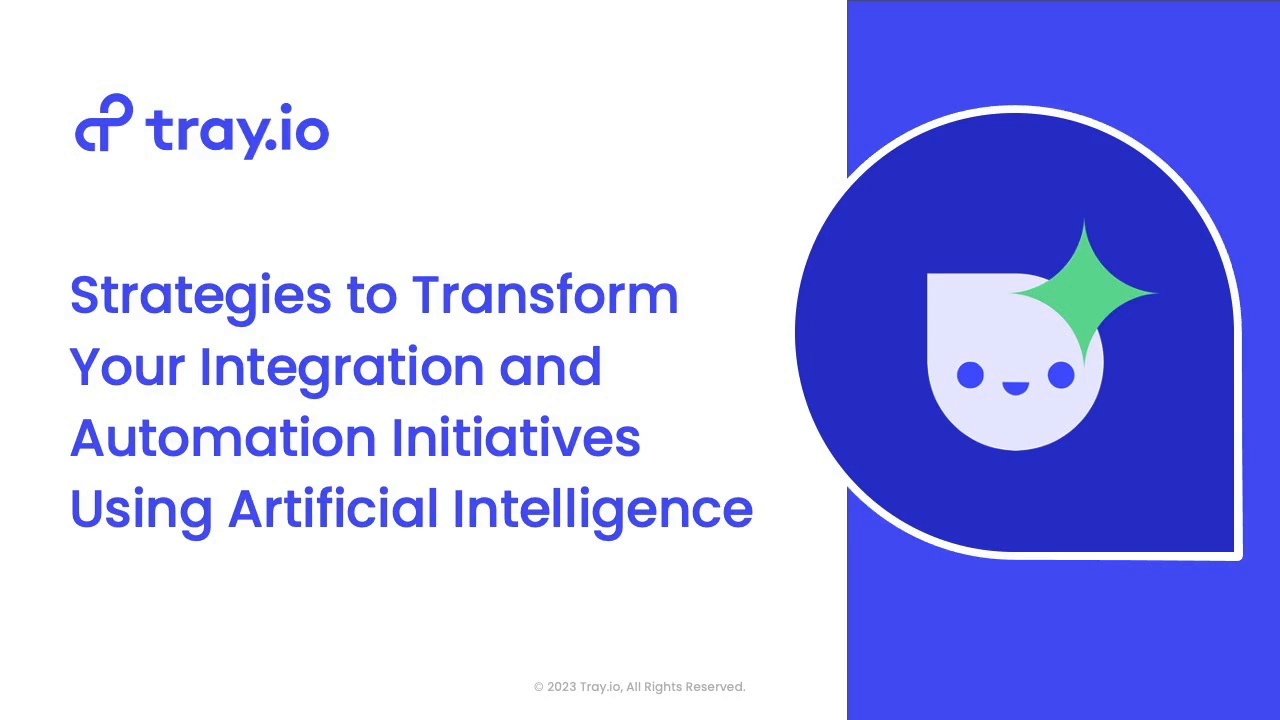- Build
- Code
- Chat
- Process automation
- Data integration
- API management
- Agile connectivity
- Integration marketplaces
- Merlin Intelligence
- Merlin Agent Builder
- Enterprise Core
- Plans
- Connectors
- Information technology
- Revenue operations
- Product and engineering
- Finance
- IT Onboarding
- Lead lifecycle
- Embedded integrations
- Order-to-cash
- E-commerce
- Salesforce
- Slack
- NetSuite
- Snowflake
- JIRA
- Zendesk
- Hubspot
- OpenAI
- Customer stories
- Events and webinars
- Blog
- Tray Academy
- Community
- Tray Advantage
- Documentation
- Find an expert
- Templates
- Developer portal
- Company
- Get in touch
Strategies to transform your integration initiatives using AI
See how teams are embedding AI into integration projects to speed up delivery, boost flexibility, and bring automation to business users.

Overview
AI is reshaping enterprise integration. Learn how teams are using AI to speed up integration delivery, simplify automation for business users, and improve governance and security. This session covers practical examples, including conversational automation and AI-assisted workflow development, plus a live demo of Tray’s Merlin intelligence layer.
What you’ll learn
How AI is accelerating integration development and delivery
New approaches like conversational automation to support business users
How to build secure, governed AI workflows with Tray
Live demo of Merlin: AI-assisted integration in action
Session chapters
How AI is changing integration strategies
Using conversational automation for faster delivery
Live demo: building workflows with Tray Chat
Introducing Merlin: AI for integration development
Q&A and key takeaways
Let's explore what's possible, together.
Contact usMore like this
How Yext cut integration costs by 60% and delivered faster with fewer tools
Yext delivered 100+ integrations in 3 months. See how they did it—and why their old platform was slowing everything down.
What to do with your second agent
Learn from Tray.ai CEO Rich Waldron and Amalgam Insights CEO Hyoun Park on how to master scaling AI agents, from orchestration and ROI to scalable deployment.
Behind the build: HR, knowledge, and data agents in action
See three real AI agents solving enterprise problems — live